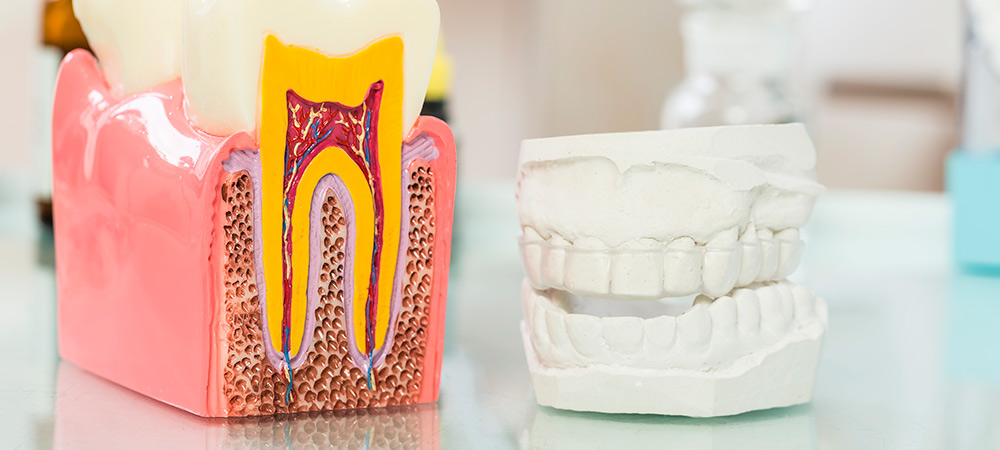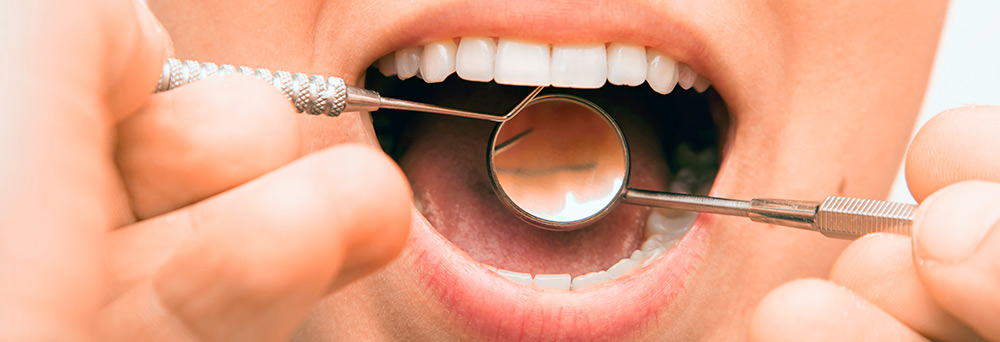

Periodontics
This is the speciality that deals with the study, prevention and treatment of periodontal diseases (gum disease). The tissues that support and protect the tooth are: the gum, the alveolar osseous, the periodontal ligament and the root cementum.
Depending on the degree of tissue involvement, there is:
- Gingivitis: inflammation of the gums.
- Periodontitis (“Pyorrhoea”): more advanced stage of involvement than gingivitis. It affects the gum, the periodontal ligament, the alveolar bone and the cementum.
The main cause is inflammation caused by bacteria. It leads to destruction of the deeper tissues such as the bone and periodontal ligament.
It rarely causes pain, so it often goes unnoticed.

Gingivitis causes:
- Reddening of the gums.
- Spontaneous bleeding.
- Bleeding when brushing teeth.
Its evolution leads to periodontitis, causing: mobility and/or separation of teeth, gingival recession, gum discomfort, halitosis, a feeling of long teeth and abscesses.
The evolution can be slow or rapid. What is clear is that if it is not treated in time, the disease progresses, causing tissue destruction and consequently the loss of the tooth.
Gingivitis affects 75% of young people between the ages of 20 and 25. However, periodontitis predominates in adulthood and usually manifests from the age of 30. In addition, it increases with age and is the leading cause of tooth loss in adults. It rarely occurs in young people except sometimes when the disease is very aggressive.

Several scientific studies have shown that diabetic patients are 4.2 times more likely to develop periodontal disease than non-diabetics. In addition, they suggest that an uncontrolled periodontal disease may worsen the progression of diabetes (it influences the patient’s glycemic control).
In addition, because periodontal disease can go unnoticed, the diabetic patient may become uncontrolled without knowing it.
Therefore, it is advisable for the diabetic patient to go to the dentist for regular check-ups in order to detect this type of pathology and treat and / or control it, if necessary.
The relationship between diabetes and periodontitis is usually in both directions. Proper control of one condition and the other can improve the prognosis and the tendency to complications.
The effect of tobacco on the gums (besides staining on the teeth and bad breath), causes a lower blood supply to the tissues (vasoconstriction) and also decreases the mechanism of defense of the gums against bacteria.
Consequently, it masks the bleeding gums, deceiving us so that we do not see them inflamed.
Numerous studies have shown that the response to periodontal treatment is worse in smokers in the short and long term.
That is why it is very useful to keep in mind that quitting smoking will be a point in favor of periodontal treatment and long-term maintenance of the teeth.

